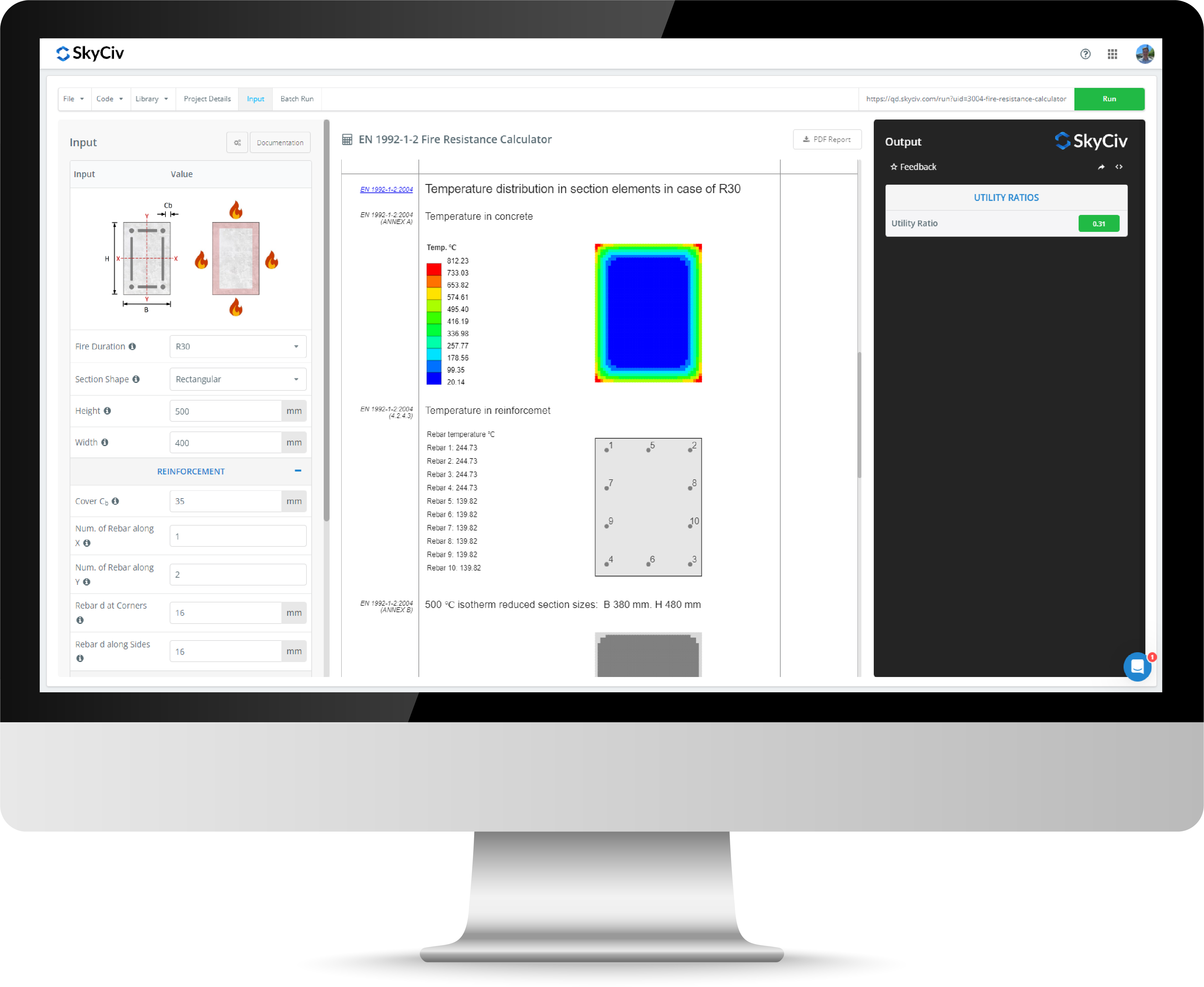SkyCiv Stress-Strain Calculator
The SkyCiv Stress-Strain Calculator allows you to calculate stress-strain values for non-linear RC design parameters as per the theory proposed by Mander et al. (1988). This approach is applicable for confined concrete with both circular and rectangular-shaped transverse reinforcement. The results provided include the modulus of elasticity for the concrete, the confined compressive strength and strain in the concrete, lateral pressure from the transverse reinforcement and many others. A stress-strain curve graph is also provided for your results in the report.
What is stress and strain?
In structural engineering, stress refers to the force applied to a material per unit area. Meanwhile, strain is the deformation or change in the shape of the material that results from the applied force. Stress and strain are directly proportional to the elastic limit of a material.
How is a stress-strain calculator useful?
The SkyCiv Stress-Strain Calculator is a web-based app to provides stress-strain values for non-linear RC design parameters as per the theory proposed by John Mander et al. (1988). The theory is applicable based on a unified stress-strain approach for confined concrete applicable to both circular and rectangular-shaped transverse reinforcement. It consists of two parts, that is, a parabolic branch up to peak concrete stress and a linear falling tail up to a certain residual stress.
What is the Mander model for stress-strain?
Mander's (1988) model for the stress-strain relation of confined concrete proposed the stress-block parameters (α and β) for different levels of confinement. These equivalent rectangular stress-block parameters are extensively used in the analysis and design of concrete structural members and offer a convenient way to determine flexural capacity. These parameters are directly derived from the stress-strain relation of concrete. To determine the stress-block parameters (α and β), we equate the area and the first moment of area under the concrete's stress-strain curve with the effective rectangular stress-block.
How do engineers test stress and strain results?
By testing materials with a universal testing machine (UTM), engineers apply a force (or pressure) with the help of hydraulic jacks to a specimen with a known cross-sectional area. From this, the stress is calculated. The deformation of the member under several instances of load (or pressure) is observed. Based on this actual deformation versus the original length of the specimen the strain is calculated.
Stress-strain calculator FAQs
Can the stress-strain calculator calculate ductility from the stress-strain curve?
The calculator evaluates the stress-strain relation of concrete and represents the behavior of both normal-strength and high-strength concrete in their unconfined and confined states.
Can the stress-strain calculator calculate Yield Strength?
No, it cannot estimate the behavior of this composite material.
Can the stress-strain calculator calculate the Modulus of Elasticity?
Yes, based on the graph, one can further develop the mathematical formulation to arrive at the modulus of elasticity of this composite material.


